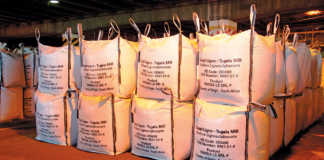
How closely do you follow dietary changes in your markets? These take place slowly, almost imperceptibly, which makes them difficult to detect and hence more of a threat to the farmer.
READ Prepare to sell much more fruit and veg online
My wake-up call came from VOX, a US-based news and opinion website, which recently published a remarkable chart detailing 180 products, and how changing tastes in the US over the past 40 years have affected per capita consumption of these items.
For example, it tracks 24 different canned products. Consumption has increased in only three of them: tomatoes, olives and chilli peppers. In all the others, from apple sauce to tuna, it has dropped. Canned cherry consumption is now virtually zero.
With some exceptions, the same downward consumption trend is evident in frozen and dried food lines, with a concurrent swing to fresh produce. Frozen cauliflower, for instance, is down 37%, with fresh up 41%; frozen asparagus is down 62%, and fresh up a whopping 259%.
READ Dutch company’s success in turning food waste into feed
Exceptions to the rule are frozen sweetcorn (up 82%, with fresh also up by 26%) and frozen blueberries (up 140%, with fresh also rising by 664%).
The superstars in fresh vegetable lines have been broccoli (up 797%) and mushrooms (up 665%), with the canned type dropping 12%.
Extraordinary growth has taken place in some fruit lines, such as avocados (1 135%) and mangoes (2 800%). But consumption of almost all fresh fruit lines has increased remarkably over this period.
With meat lines, consumption of beef is down 33% and lamb by as much as 71%.
Americans are eating more chicken and turkey, with per capita consumption up 95% and 78% respectively.
The VOX chart covers nuts (enormous growth in almonds and pistachios), dairy products (whole milk consumption down 78%, and yoghurt up 992%), fruit juice (orange down, apple up), berries, cereals and grain-based products.
Coming soon to South Africa
You might be wondering why I’m discussing US dietary changes in a South African farmers’ magazine.
READ Food-to-go: Retailers tuck into a growing trend
It’s quite simple: what happens in US markets is a precursor to what happens in markets all over the world. The trends identified by VOX in its analysis of US Department of Agriculture data will soon appear in many of the consumer markets targeted by our farmer-exporters.
They need to take note.
And, as we’ve seen time and again, these trends will reach South African shores in due course and affect our own local market. Many of them have already done so, as noted by Lisa-Claire Ronquest- Ross et al in ‘Food consumption changes in South Africa since 1994’, published in South African Journal of Science in 2014.
While consumption of some items in canned and preserved food lines (beans and canned meats, for example) has increased in South Africa, consumption of this food group as a whole has declined 13,3%.
READ Good marketing knowledge key to fresh produce profits
In contrast to the US, frozen lines have increased 22%, with some having risen as much as 100%, no doubt because many more households now have fridges at home.
In fresh produce, the traditional lines of tomatoes and onions are up significantly, while other vegetable lines are down.
Fresh fruit consumption as a whole has risen, with major variation between different types (for example, grapefruit up 362%; oranges down 34%; grapes down 71%; and bananas up 145%).
With meat, the pattern of consumption in South Africa mirrors US trends, with beef and lamb consumption down (7% and 5% respectively) and chicken up sharply at 109%.
Reliable data on market trends in the developed world are readily available. Take note of the trends, and plan your production, added value and marketing accordingly.











